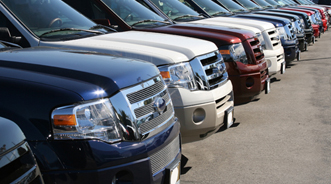Urban Science: Dealership Attrition Slows in 2010; Bright Future Ahead?

By subscribing, you agree to receive communications from Auto Remarketing and our partners in accordance with our Privacy Policy. We may share your information with select partners and sponsors who may contact you about their products and services. You may unsubscribe at any time.
DETROIT –
In the wake of a slew of challenges — including automaker bankruptcies, brand elimination, network consolidation and arbitrations, as well as a rough economy — dealership attrition finally calmed down in 2010 and approached what it is considered the “normal” level, according to the 2010 Automotive Franchise Activity Report from Urban Science.
In other good news for dealers, they were also more profitable last year and the future for dealers appears bright, as well.
Urban Science said the national count in the U.S. was at 31,139 franchises and 17,659 dealerships at the end of 2010. This represents a year-over-year attrition of 4.4 percent, compared to the "unprecedented" 8 percent attrition rate reached in 2009.
Urban Science noted that “normal” attrition for a year ranges from 1 percent to 2 percent. Officials indicated that domestics account almost the entire attrition rate. Imports, meanwhile, have been steady in their numbers.
Overall, dealers — domestic and import — saw increased profits last year. The increases were quite diverse, as they went from 38 percent on up to 129 percent.
Domestics enjoyed stronger sales per dealer in 2010, which stems from realignment and consolidation, Urban Science noted.
Subscribe to Auto Remarketing to stay informed and stay ahead.
By subscribing, you agree to receive communications from Auto Remarketing and our partners in accordance with our Privacy Policy. We may share your information with select partners and sponsors who may contact you about their products and services. You may unsubscribe at any time.
“Domestic dealers have been through a lot in the last two years, facing economic challenges, consolidation, arbitration and brand elimination and are poised to experience improved profits in 2011,” said Urban Science vice president John Frith.
“The domestic consolidations worked, and have allowed the remaining dealers an opportunity see their numbers rebound faster,” he added.
How exactly have consolidations affected domestic brands? Urban Science pointed to details on throughput, which is another name for average sales per dealership. Throughput climbed from 564 sales to 656 sales last year.
“The reason for the tremendous rebound last year and into this year is not only increased sales, but that those sales are now concentrated among a smaller number of dealers,” said Urban Science global director Randy Berlin.
“Dealers have also gone through major cost reductions, so the increased sales and throughput are going straight to the bottom line, giving dealers increased profitability,” Berlin added.
This year’s sales per dealer has the potential to approach 745 sales should the auto market hit the full-year sales total of 12.9 million units that the National Automobile Dealers Association has projected for 2011, Urban Science projects.
A sales per dealers rate that high has not been achieved since the days of 16 million to 17 million vehicle sales per year.
Moving along, Urban Science offered a few more nuggets of information regarding dealership numbers from 2010 and looking ahead to this year.
Hummer, Pontiac, Saturn and Mercury — all discontinued brands — had the heaviest franchise drop-offs. Mercury will shut down the 819 dealerships it has left this year.
Six brands actually saw their number of dealerships climb last year, those being Chrysler, Jeep, Kia, Mini, Hyundai and Subaru.
The brand with the most dealerships is Ford, which marked its first time in the No. 1 spot. It narrowly edge Chevrolet. Those two brands have never been so close before in terms of store numbers.
And in some more positive news for domestics, the four Chrysler brands almost have attained the automaker’s reorganization goals.
“Chrysler, Dodge, Jeep and Ram are very close to their consolidation strategy with about 86 percent of stores combined at all four brands,” Urban Science indicated.
Continuing on, Urban Science also projected that with 29 all-new model launches slated for this year, there is likely to be an influx of customer leads. When a new vehicle is rolled out, leads typically increase somewhere between 50 percent and 525 percent.
This certainly is a good opportunity for dealers, but as Urban Science noted, it can be challenging for dealers as they have to “sort through and respond.”
However, it is pivotal that they do so because online leads typically drive 15 percent to 30 percent of a dealership’s new sales, Urban Science pointed out.
“The high number of Internet leads will require dealers and OEMs to implement a strategic lead management system to assist in sorting good and bad leads,” explained Jody Stidham, Urban Science global practice director.
“It’s important dealers and OEMs work cohesively to manage these leads and effectively provide good customer service without wasting valuable resources,” Stidham concluded.


